Cow parsnip blossom tempura is one of, if not the best cow parsnip recipe, ever. The young, unopened flower blossoms of the plant are delicious, and much more mild tasting than the stems and leaves.
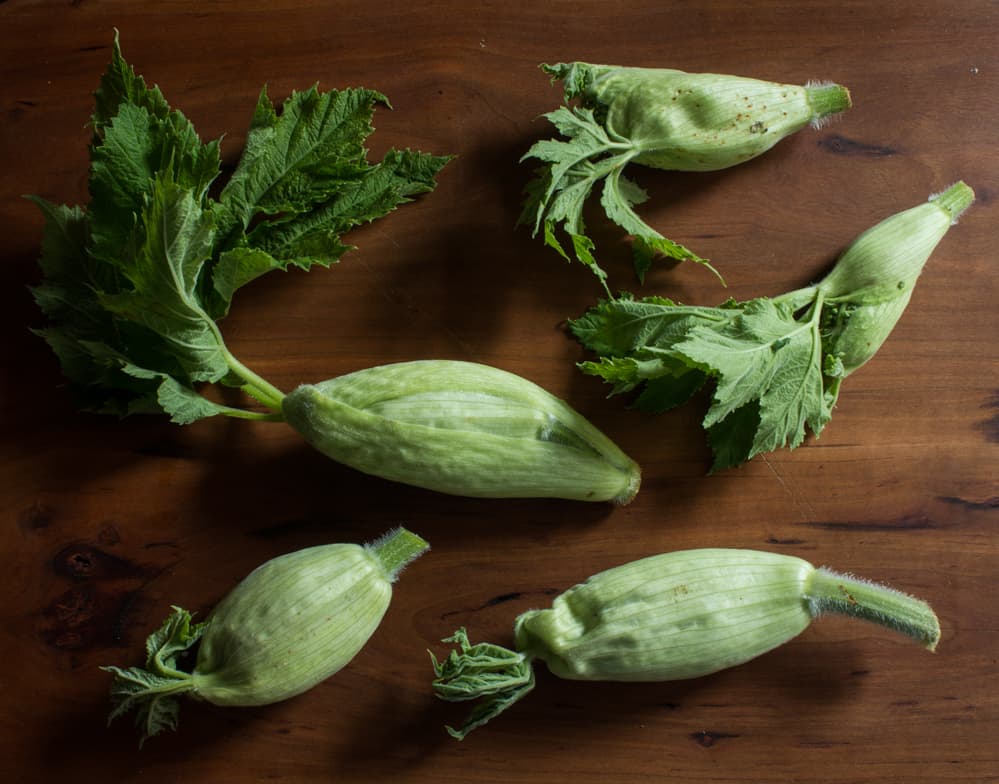
I found an Italian website (I've since tried to find it and it's gone or has been taken down) that talked about hunting mushrooms, but also mentioned older women from the Italian village where the author was staying who picked wild plants to bring to the local market to sell.
While I was translating the website content from Italian, I ran into a couple words in one of the paragraphs: "frittura", "fiori", and in parenthesis "Heracleum". I knew what was happening: the Italian ladies were picking (and deep frying) cow parsnip flower blossoms. I thought it was fascinating. To my knowledge in Minnesota we have Heracleum lanatum.
The Spanish and Italians are known for their zucchini and pumpkin blossom eating penchant, but I'd never really thought about eating the blossoms of any other plant before. It made me wonder too, since foraging is an integral part of so many cultures, if consumption of Cow Parsnip blossoms (or some other blossom that's really awesome I don't know of) could pre-date the more well known zucchini and pumpkin.
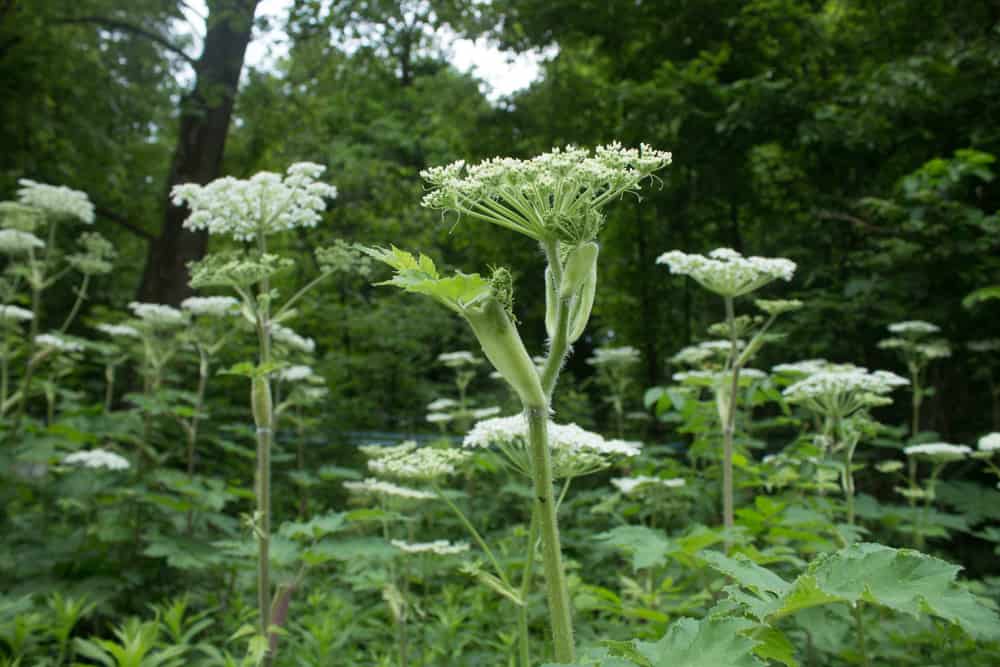
If you haven't eaten cow parsnip stalks or leaves, the flavor is fantastic. Like it's relative angelica, it has a potent aroma/flavor, intense and full of perfume. It's a strong flavor, but an awesome one.
Pressed, I'd probably say it tastes a bit like lovage, but with less celery and more citrus notes, and much less medicinal tasting than angelica, especially after cooking. I can't talk enough about how Cow parsnip is a fantastic vegetable, not a toxic danger.
I kept on checking a place I was staking out for the cow parsnip and once summer started creeping in I knew I was going to hit paydirt, the question was all going to be about timing. The plant shoots out flowers that come out of a blossom that gradually opens, the trick is getting the blossoms at the right time-a few days late and they'll just be a cluster of flowers.
To compound things, after the flowers form, most edible parts of the plant will start undergoing the changes we associate with a plant going to seed and maturing: becoming tough, stringy and not that pleasant to eat.
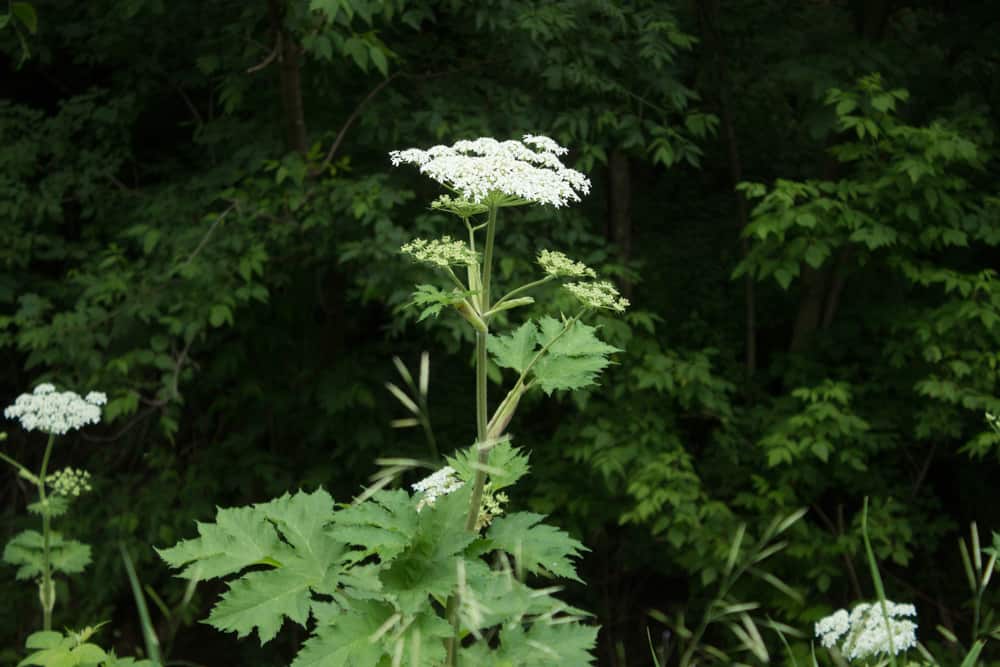
I ended up being able to harvest from the colony a couple different times, since not all of the plants will shoot their flower stalks up at the same time.
I'd put on my gloves to prevent getting the parsnip rash (which is really nothing to be scared of), pick a bag of blossoms, cool them down quickly and refrigerate, wait a couple days, pick another bag, repeat. After a couple trips I had enough for 2 nights of dinner service at the restaurant.
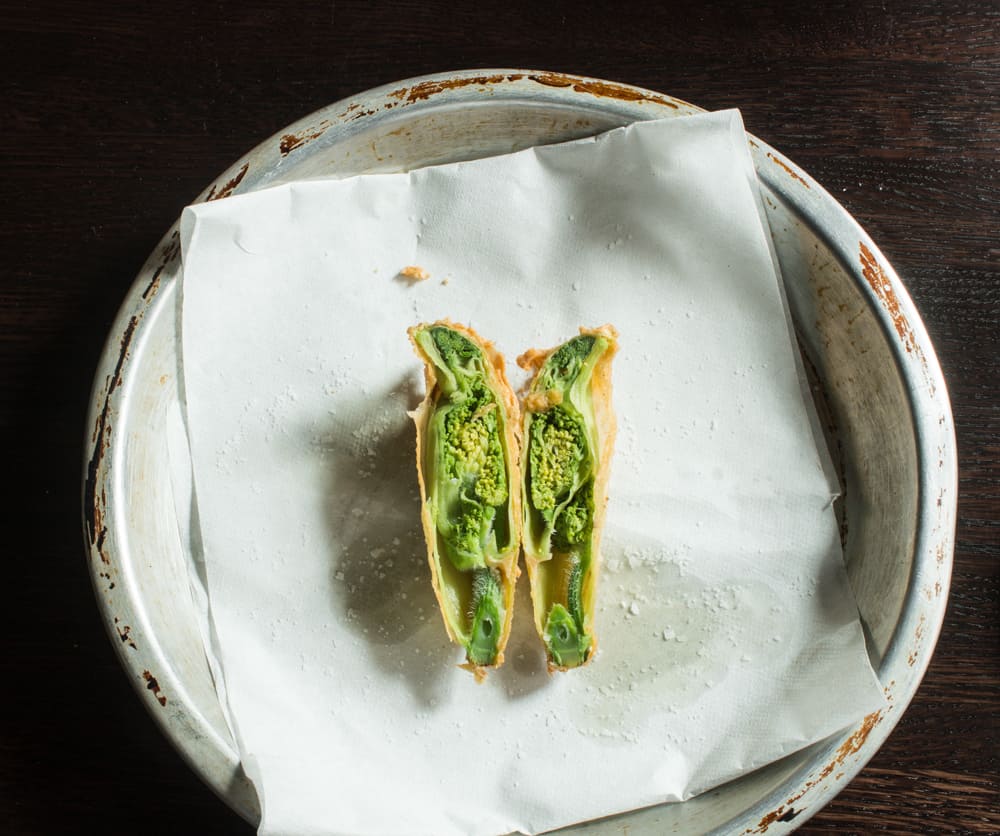
One night I remember just standing with my fridge open staring at the outer space-looking blossoms in their plastic bags, appreciating them, inspecting them.
They're large, meaty blossoms, with a lot more going on compared to to zucchini or pumpkin, since unlike those blossoms, cow parsnip is filled with unopened flower buds, which ends up tasting like perfumey broccoli, in a soft little caccoon.
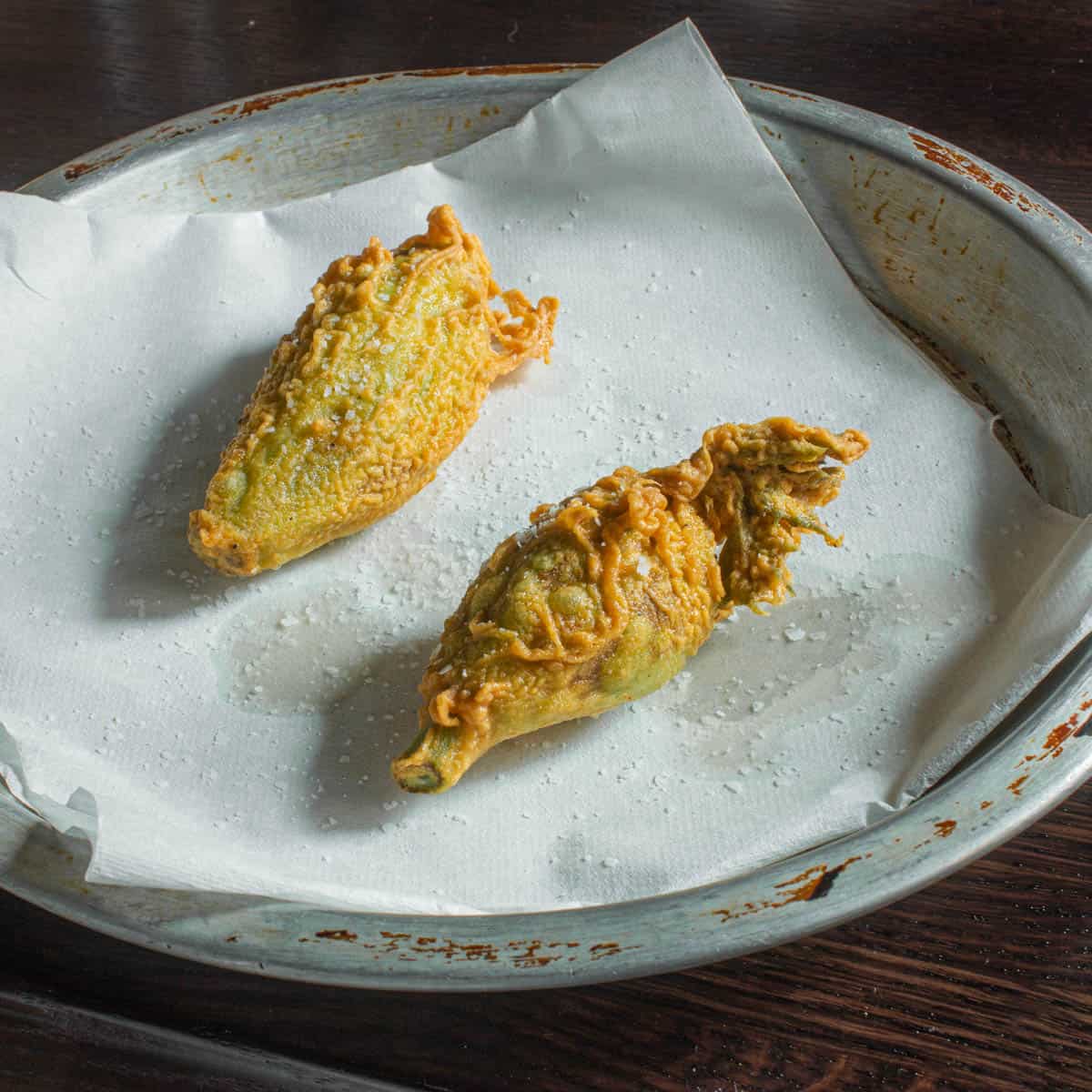
Cow Parsnip Blossom Tempura
Equipment
- 1 3 quart pot for deep frying
Ingredients
- 8 oz Cow parsnip blossoms or as needed, leaves removed
- 1 cup flour
- 1 large egg
- ¾ cup soda water
- ½ teaspoon salt
- 1 tablespoon paprika for color, optional
- ⅛ teaspoon black pepper
Instructions
- Inspect the cow parsnip blossoms for any debris or foreign particles, then wash if needed and dry.
- Combine the dry ingredients, then mix the wet until just combined.
- Heat a deep fryer to 375 degrees.
- Dip the blossoms in the batter until well coated, then drop one at a time into the hot oil. Cook the blossoms until golden brown then drain, sprinkle lightly with salt and serve hot with a slice of lemon or some aioli.
Notes
Nutrition
More
Cow Parsnip: Identification, Edible Parts, and Cooking
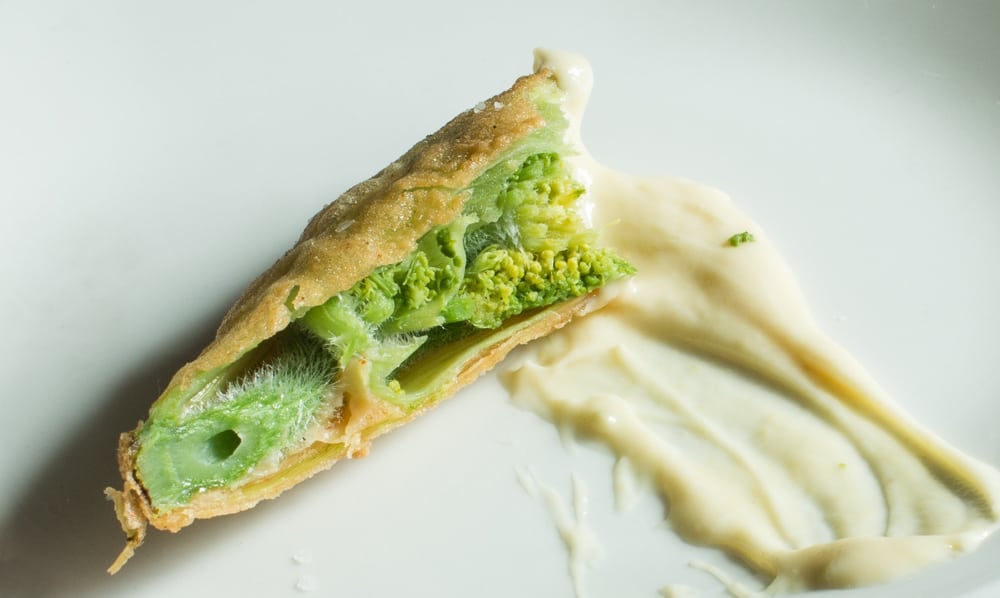

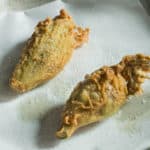
Kelly H
Finally managed to make this recipe after a few years of missing the blossoms. Absolutely top notch. I’ve been picking and eating wild things in my neck of the woods for a couple decades, it’s a rare treat to come across something so abundant and so delicious that I haven’t already tried. Thank you Chef Bergo.
Alan Bergo
Yes it can be tricky to remember them and the season goes fast, but it's worth it.
Diane Robertson
So happy I came upon this info before I reported this "poinsonous" weed in Manitoba. Sadly I will not eat, as the only ones I see are in ditches, subjected to industrial farm chemicals
Karin
i must admitI must admit I was rather sceptic to the recipe in the beginning, but (of course) I had to test it. I used angelica instead of cow parsnips blossoms – as described in the book. Angelica archangelica in my case, to be more specific. It was really delicious!!! I will definitely do it again next season.
Alan Bergo
Yes, these are pretty special. I missed them this year.
Melissa Hoffman
Thank you for this! I have used the seeds of wild parsnip for years as a flavoring in nocino, but was noticing the small blossoms on our plants, wondering this very thing. Do you know if the wild parsnip, Pastinaca sativa, blossoms are edible too? We have tons of wild parsnip here in Vermont. I also wonder about the flavor difference between cow parsnip seeds and wild parsnip seeds...
Olivia
So excited! Here in AK we have piles of pushki everywhere, every summer. I am gonna catch em young for the spring greens and then come back for the blossoms to try this recipe too.
Thanks for all you do,
Olivia
Alan Bergo
Thanks Olivia.
KJ Bird
Wait hold up, you mean that noxious plant that I fight to destroy every summer and literally makes my boyfriend melt on contact is... delicious?!? I read this to him and he's terrified... I, however, am super excited to try this. My property is covered in cow parsnip.
Alan Bergo
Yep. Cow parsnip is a native plant in NA. Giant hogweed on the other hand is definitely not native, but its quite rare up here in MN-I know of only one colony.
Margaret
A long time ago my parents went to a country fare at Kilnsey Cragg in Yorkshire. Some one was battering cow slip flowers and then rolling the in sugar and selling them! Now 35 years on my own grandchildren are wanting to do this as their mother remembers her grandmother coming home and repeating the exercise, which she really enjoyed. So I've been looking on the internet for a recipe, not wanting to poison them, and found this recipe. Now I'm certain of the right plant an know it's edible I will try it.
The reason for this comment is that I don't believe it was just an Italian way may be it was across Europe, certainly in England too,
Alan Bergo
Hi Margaret, yes, years have passed since I originally wrote this, and now I'm quite sure that the Italians were Salentines harvesting Angelica blossoms, which are very similar. If they did harvest cow parsnip it would undoubtedly be Heracleum spondylium, or something very similar--slightly different plants but the blossoms are near identical for culinary purposes. I have friends in the U.K. who harvest alexanders blossoms and cook them similarly. So yes, eating the blossoms of different Apiaceae probably started concurrently at multiple places around the world where these types of plants are found. A
Katie
This is great information. I believe this is what we have loads of on our road, but I had always been under the impression that this was Giant Hogweed and terrible to touch (or stand too close to or look at wrong or any number of horror movie terrors). I will definitely do some more research this year. If we do have Cow Parsnip I will be trying this recipe. It looks amazing!
Thank you for all you do, Alan!
Katie
Alan Bergo
Thanks so much. Unless you're living in the UK, I doubt you have H. montegazzianum. Cow parsnip is a native plant in the US, and often misunderstood or mis-identified by even gov. workers, who then spray it with roundup, etc. The window for the blossoms is short, but these are one of the best wild harvested things I've ever eaten. Angelica makes a similar blossom, and I've read that Italians will prepare it the same way after boiling once or twice to tame the flavor, hopefully I'll remember to try it this year.
Katie
Nope, I'm in Wisconsin, so that is good news! I will keep an eye on it this year. I saw that the Giant Hogweed can get to about 14 feet and I've never seen the plants by us get that big. I don't believe I've tried Angelica. I'll have to look into it though as I've heard a lot about it. Thank you very much, Alan!
Alan Bergo
Yep, you are in prime location for both of those plants, and, to make things easier, they grow in the same types of habitat. You can easily identify patches easily by driving down the road, since they love wet ditches. Angelica resembles cow parsnip a bit, but your local species should look purple, and make bright, neon green seeds. Hogweed completely dwarfs both plants in size---it looks like a massive, outer space plant. Also make sure to gather some of the parsnip seeds to use in bean dishes--google "golpar" for more on that.
Phyllis Dahlk bergo
It reminds me of Queen Anne's Lace, but the leaves look entirely different.
Alan Bergo
Yes, they're cousins, both in the carrot family. Cow parsnip is much larger though, queen annes lace also flowers later in our season here in Minnesota. Both are good to cook with, but cow parsnip can actually be used like a vegetable where queen anne's lace is more like an herb.
Claudia
Oh, I really want to try these and, thinking of your post, I collected some blossoms today in VT, in the edge of a field near a stream. The problem is I'm not 100% sure they are cow parsnip. The plants were large, around 4 -5 feet tall, deep green but I can''t recall the exact shape of the leaves. I want them to be cow parsnip so bad. I'm sure they are not wild carrot. And I know you can eat angelica blossoms. So, if I'm thinking right, the main plant to be concerned about in terms of look-a-like is wild parsnip.
Do those blossoms look the same?
Jamie
I was just out trout fishing and saw these. I was wondering if they were edible and now I know.
Alan Bergo
Jamie they are excellent. I sold about 200 orders of them in the past 3 weeks. Customers are really liking them. I think they can last about 3 weeks or more if chilled immediately from the field. Havent tried anything other than frying them yet, because they're so damn good fried.
Malinda Crispin
Have you ever tried making a fritter of the freshly opened flower head, as we do with acacia blossoms? It could be worth a go for a beautiful crunchy garnish -savory, or even sweet, with an ice cream or panna cotta?
Alan Bergo
That's a great idea, I bet a sweet batter would be wonderful. I did a few like that last year when I served hundreds of them to guests at Lucia's, and I did notice they got a bit greasy though, nothing a little powdered sugar probably couldnt fix though.
Dotty bacon
I can hardly wait to try these and will be happy to keep an eye out for blossoms. Great idea!
Marc
Hi Alan, I think this is equivalent to what we call common hogweed in the UK. It's a big favourite with UK foragers - both the buds and young "fiddleheads". Generally considered the best spring green edible ????.
Marc
Instagram: wyltshyrespyder